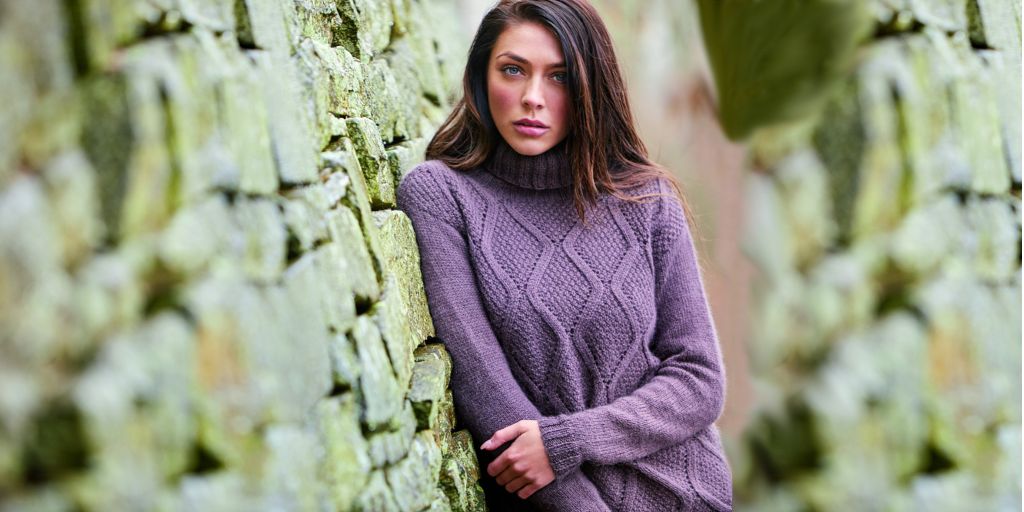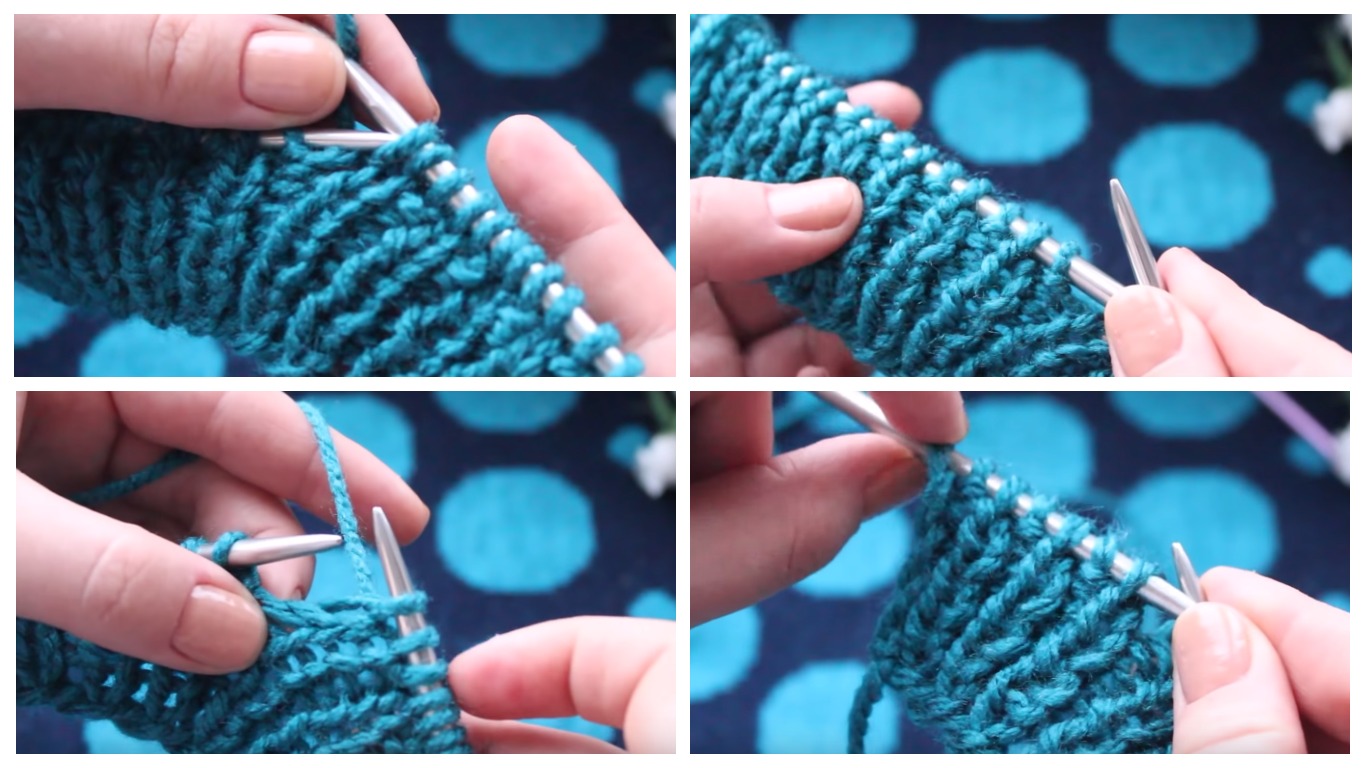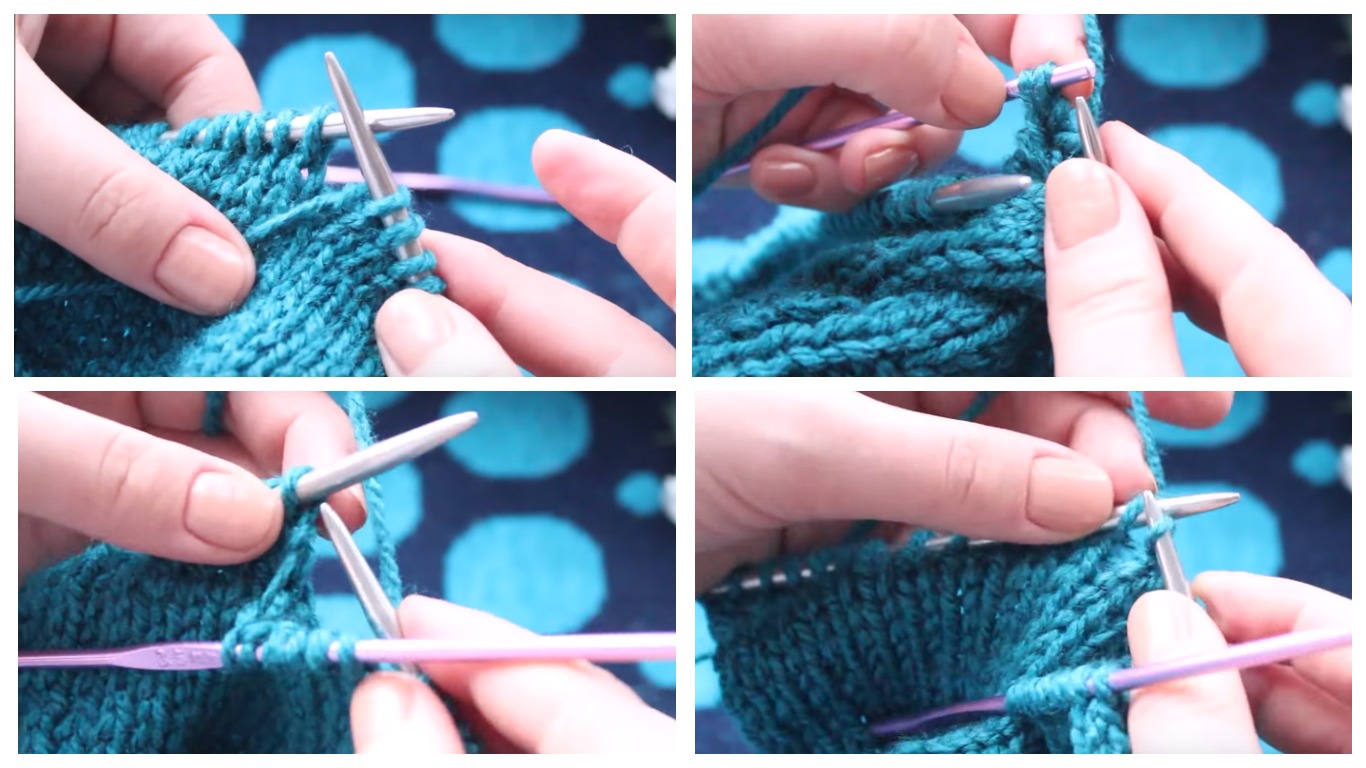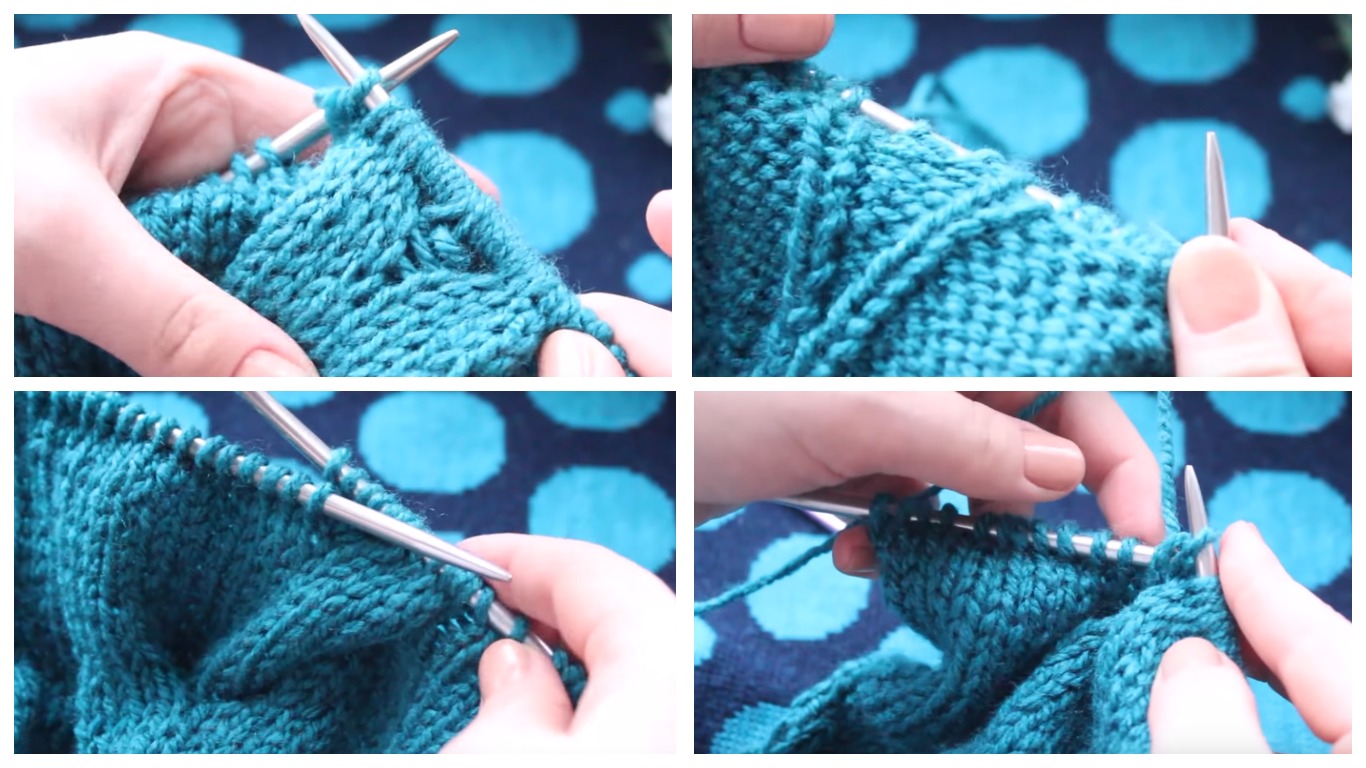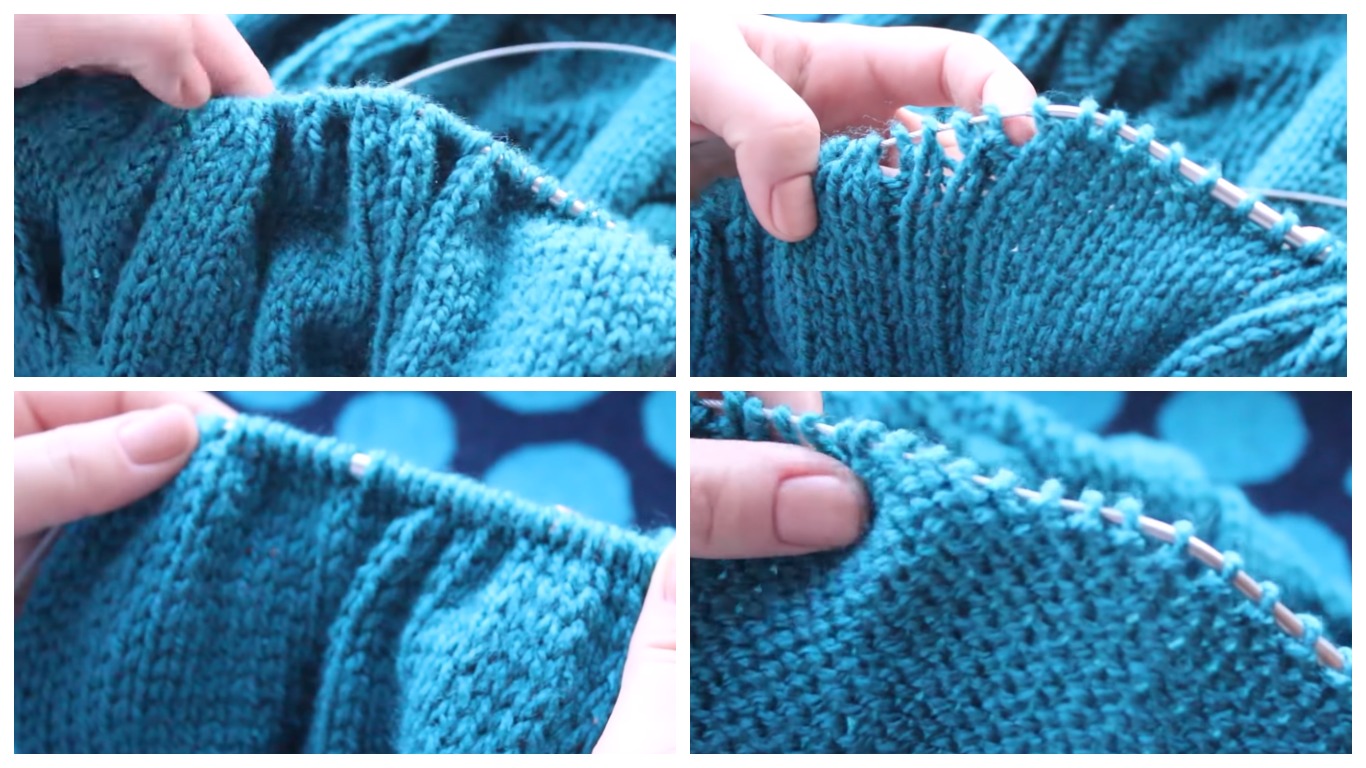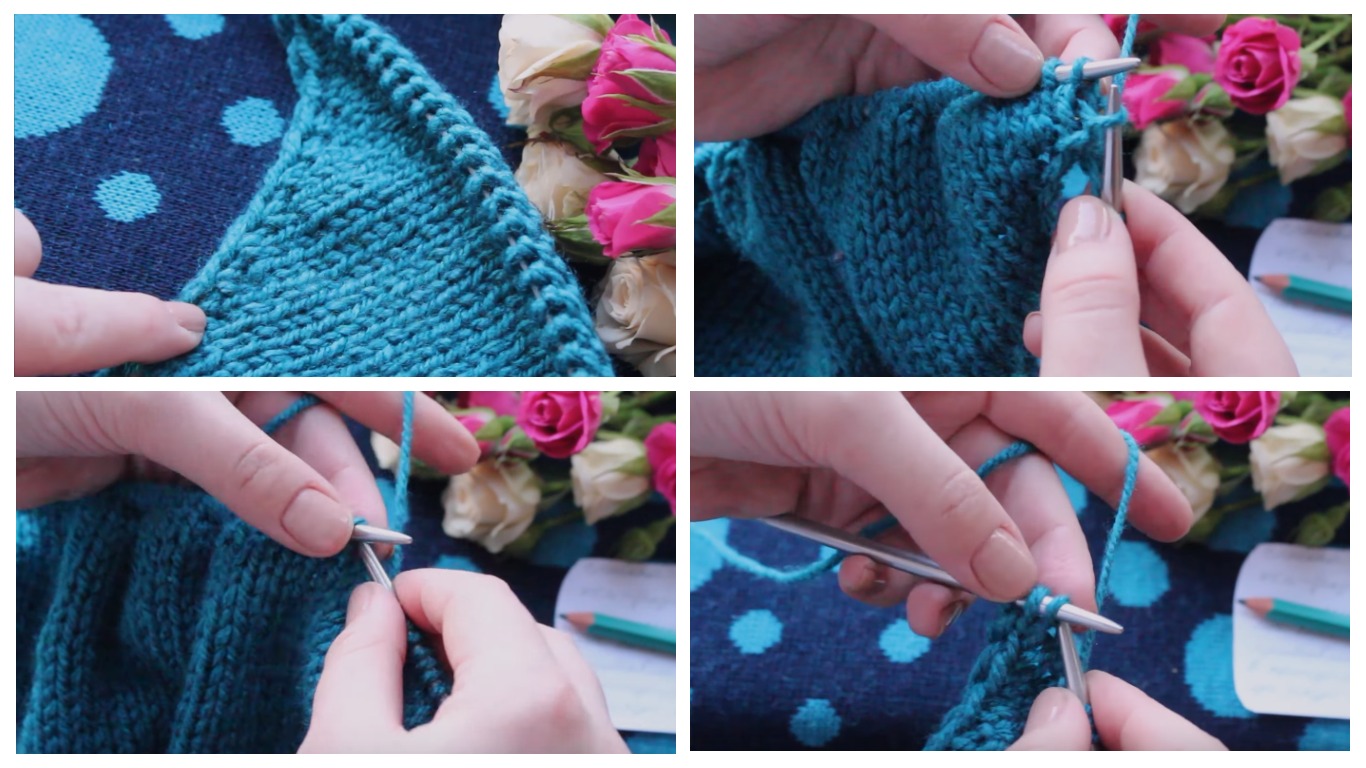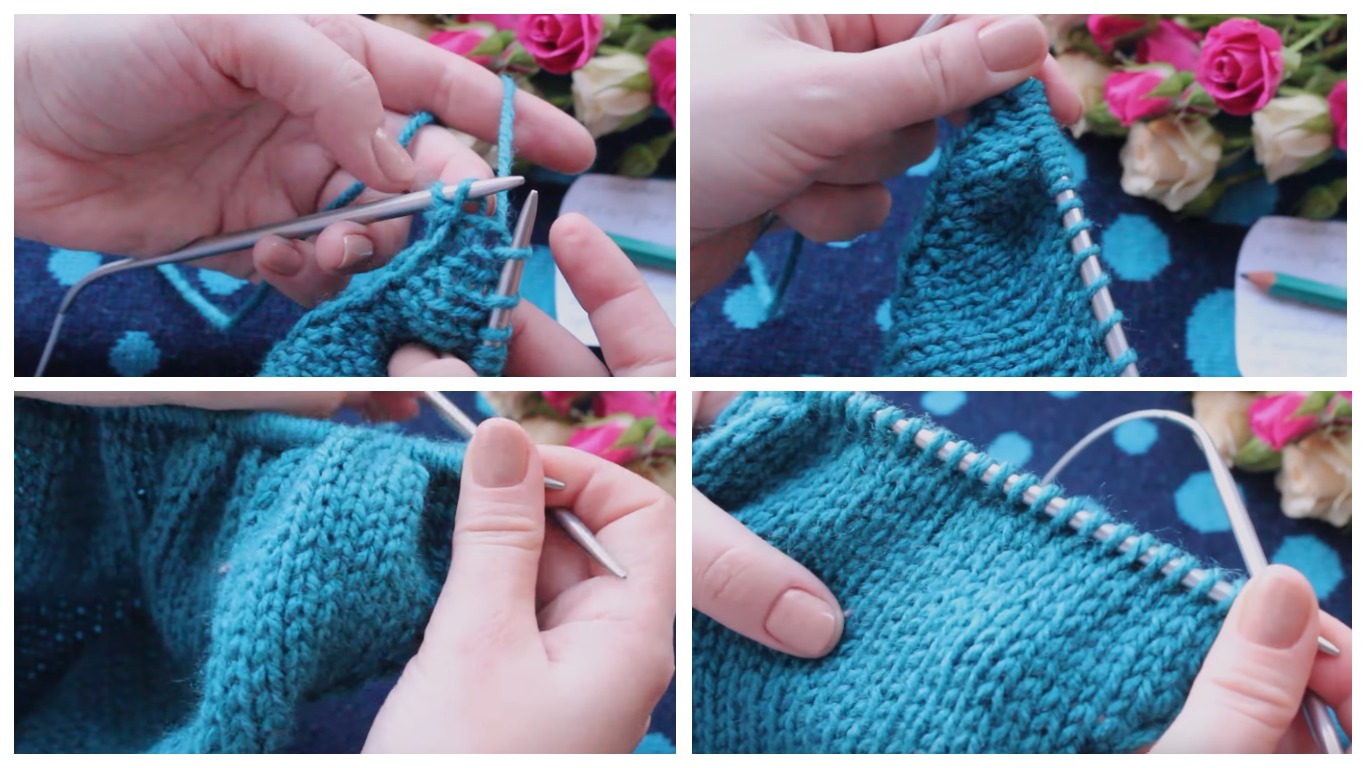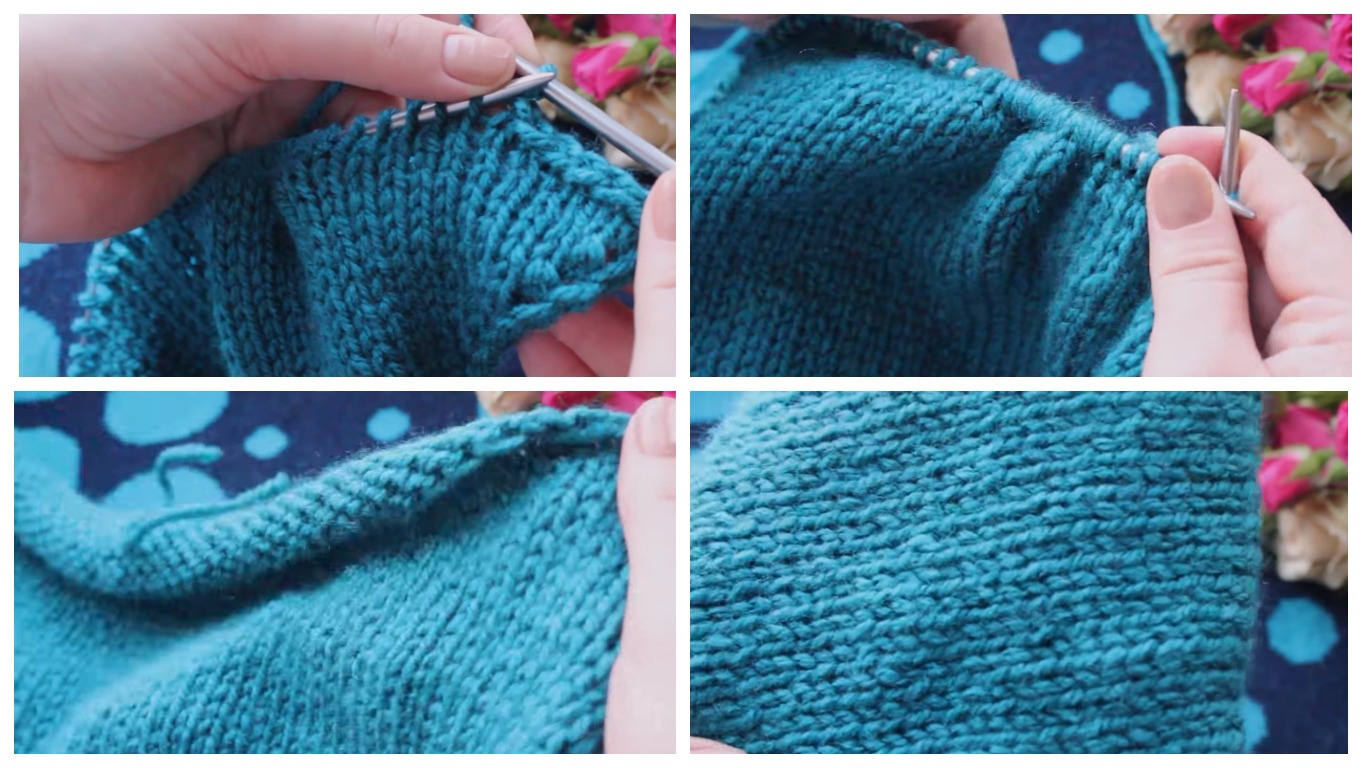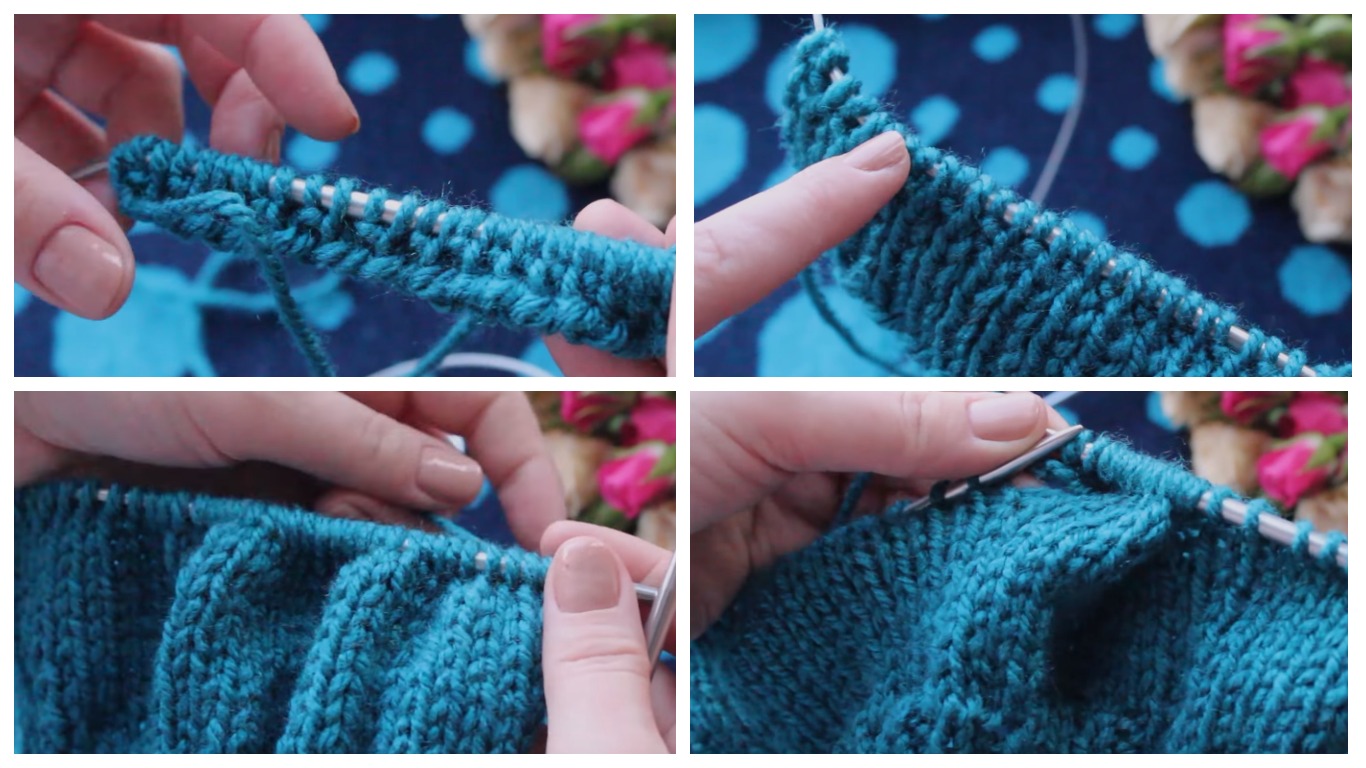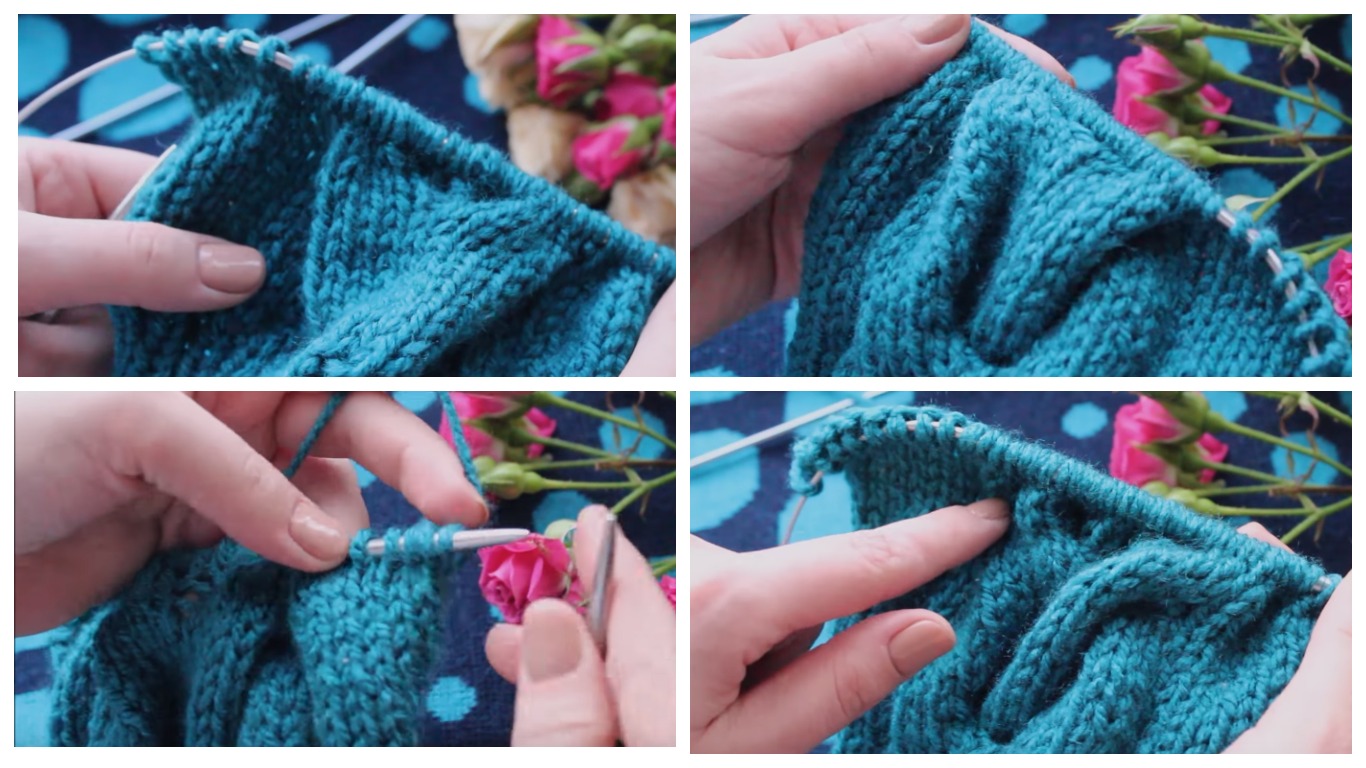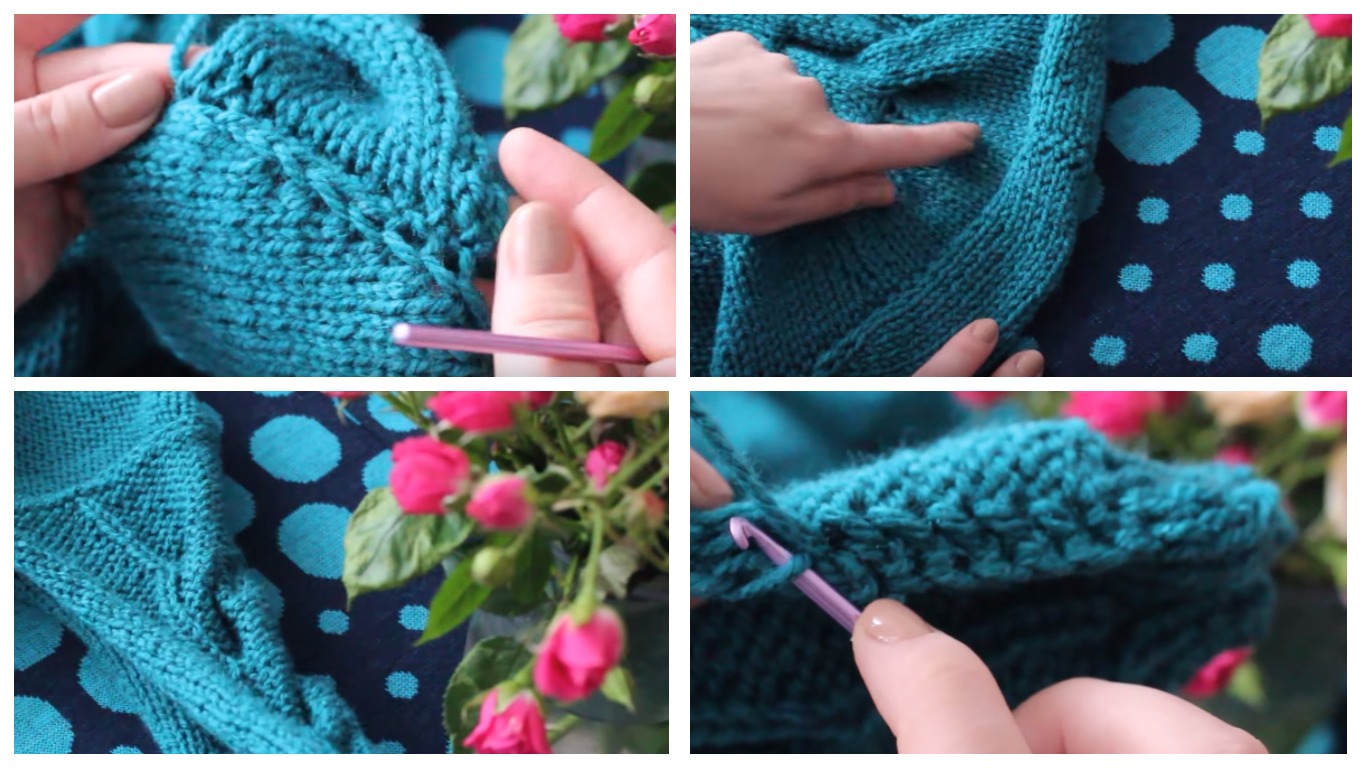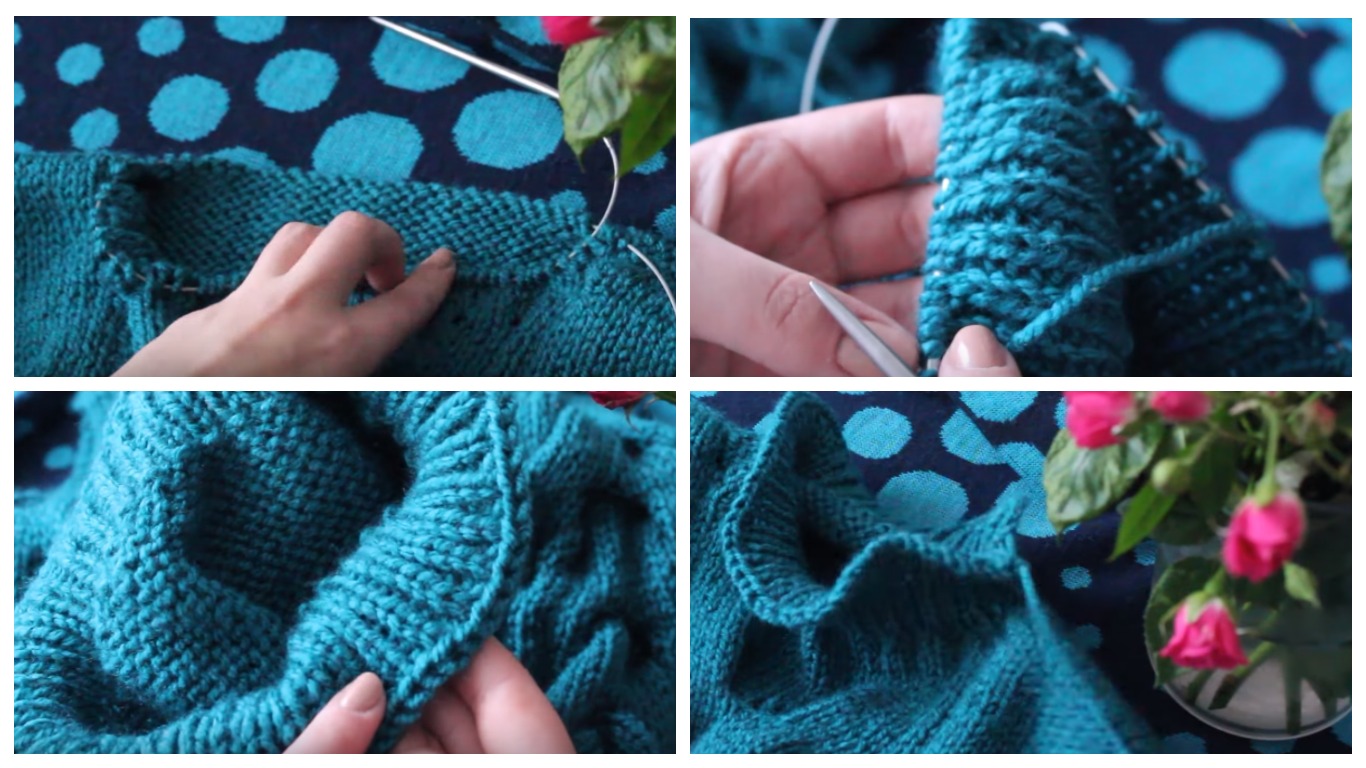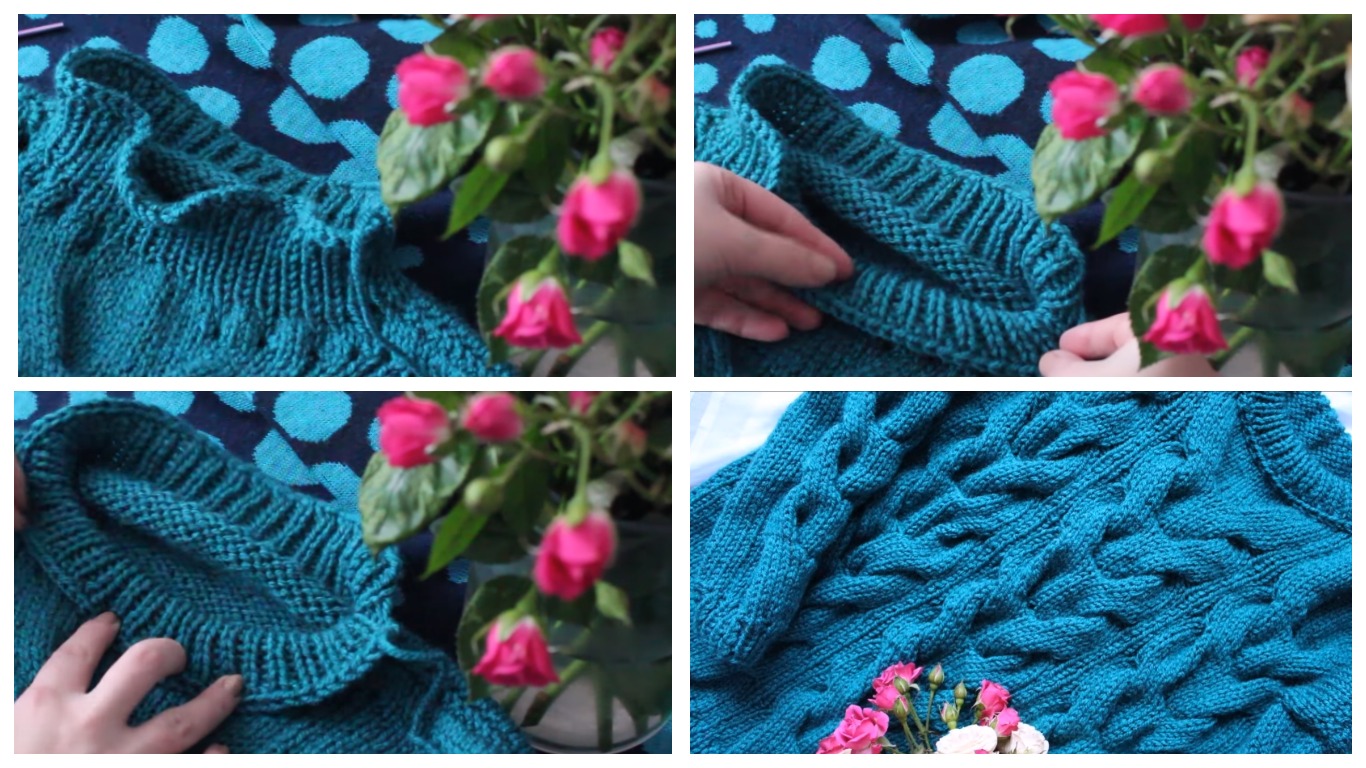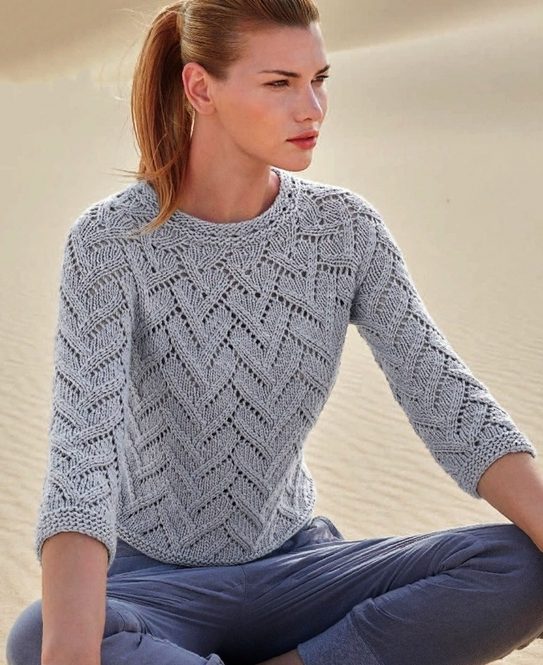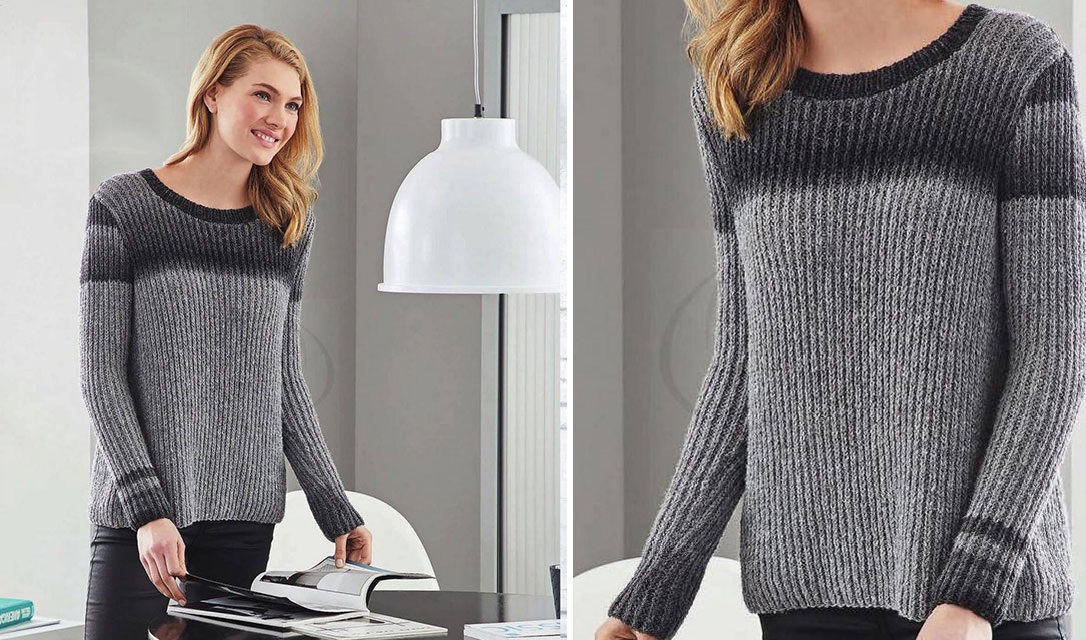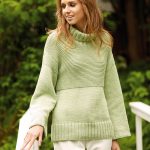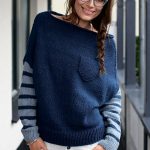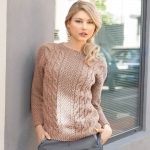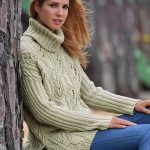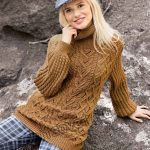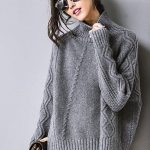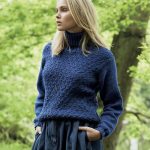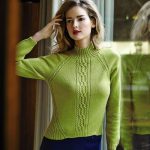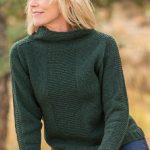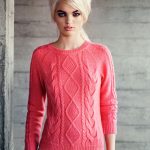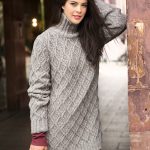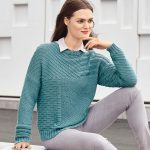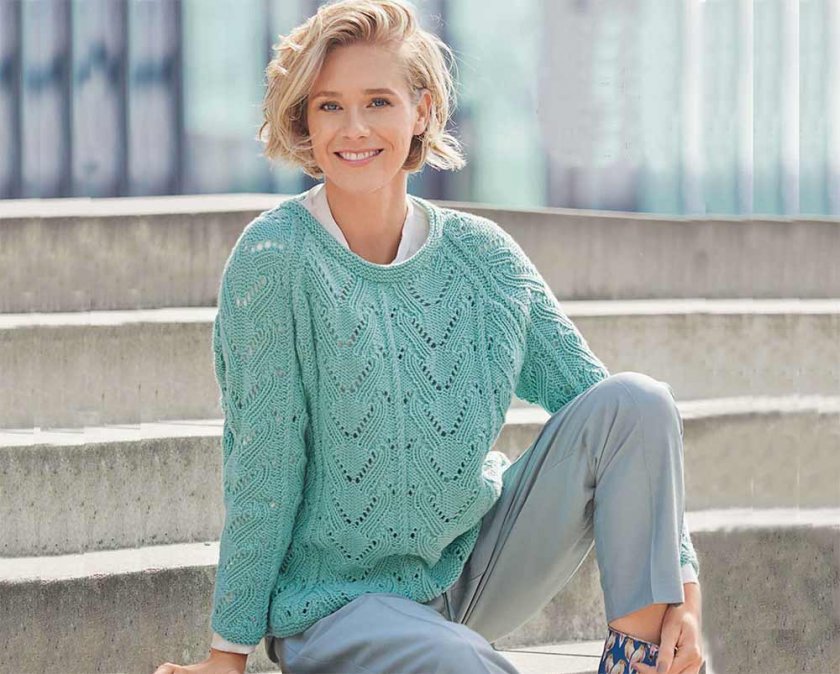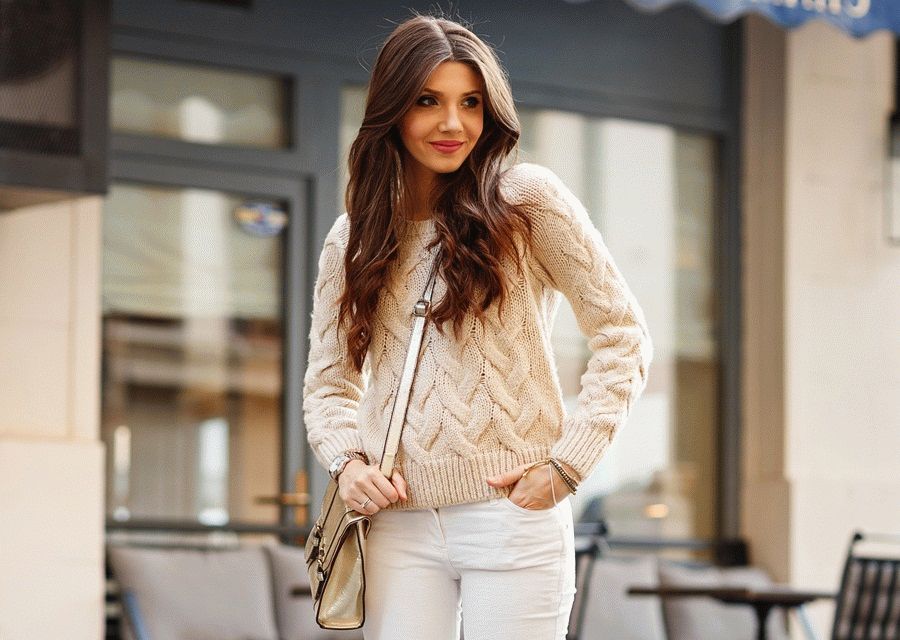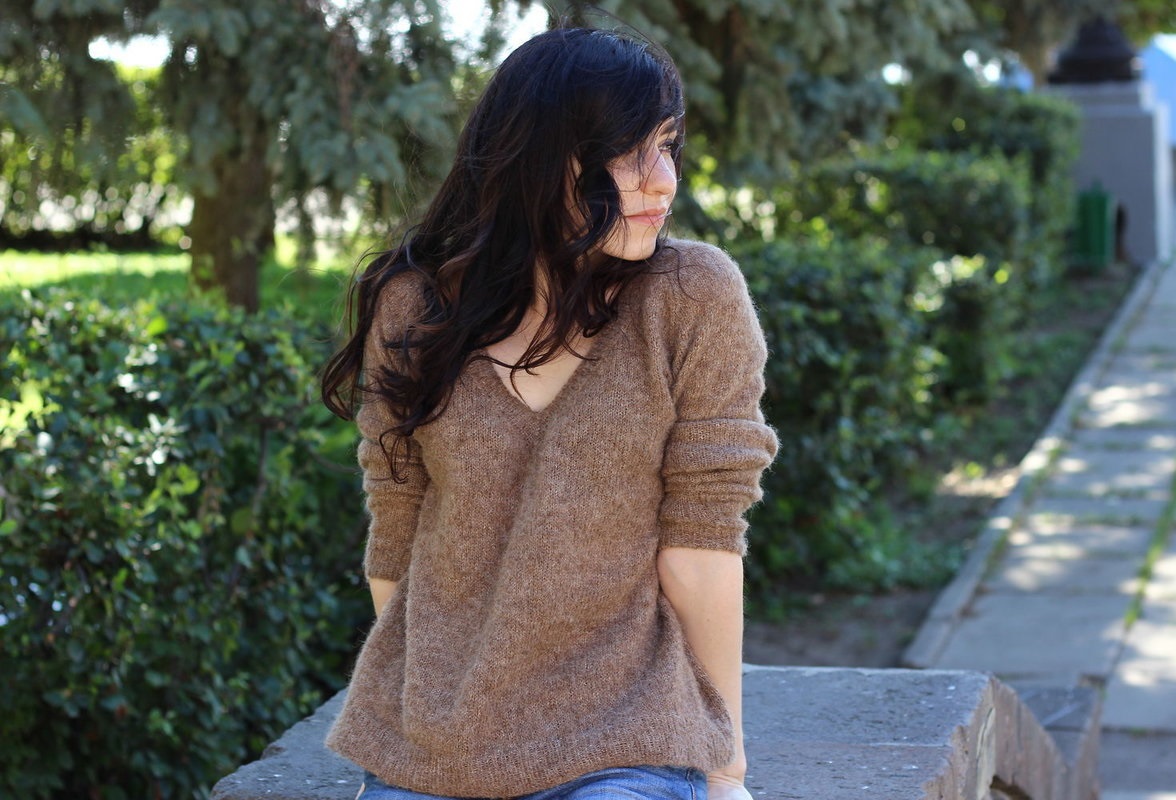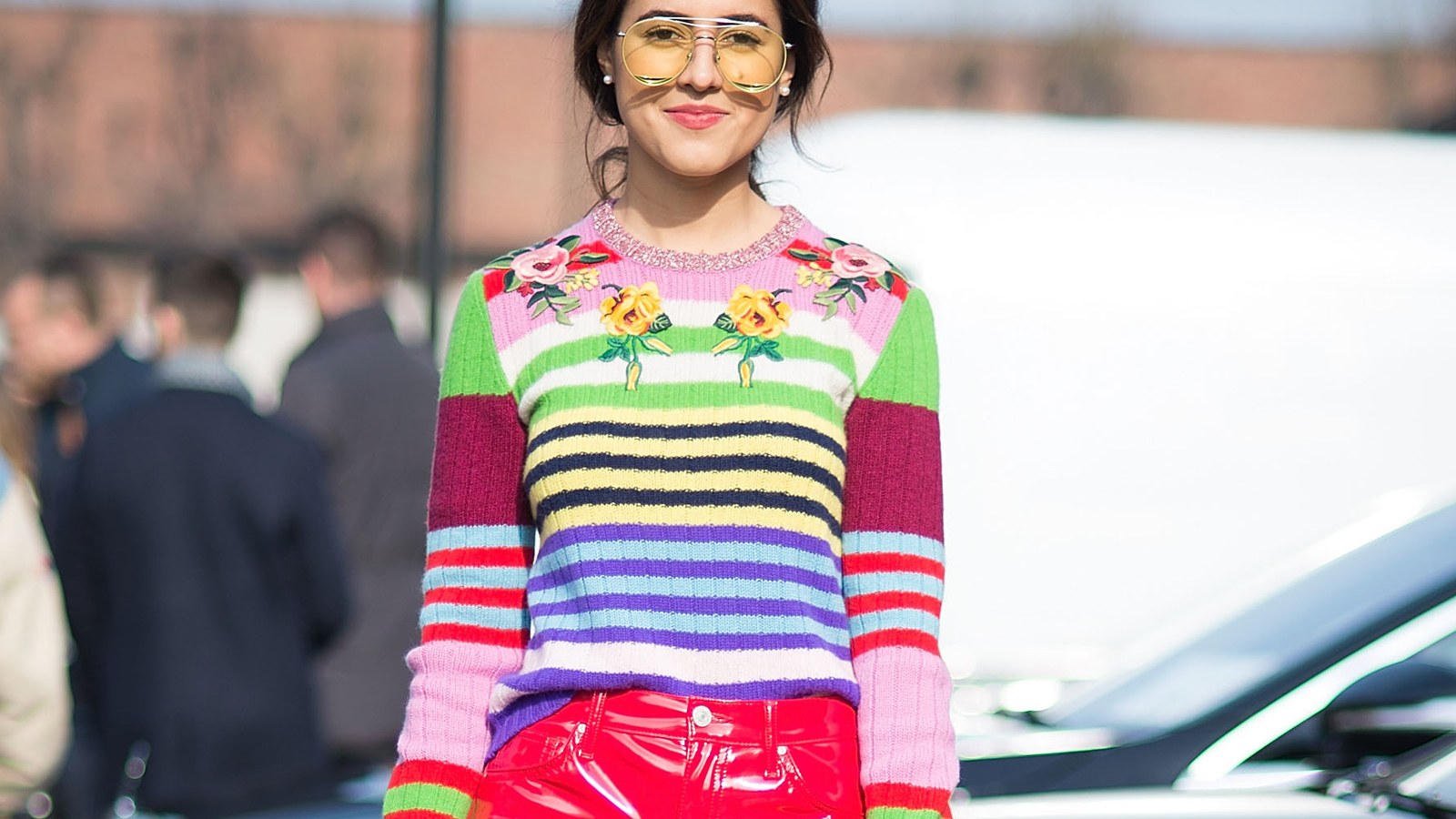A sweater is a basic item in the wardrobe of adults and children. Not many people manage to find a quality and inexpensive item on store shelves. An alternative solution is to knit a sweater with knitting needles according to individual measurements. Such an item will fully satisfy the owner's requirements. In addition, handmade clothing is unique; no one else will have a similar wardrobe item.
Selection of yarn and knitting needles
For beginner needlewomen who want to knit a sweater for spring or autumn, YarnArt Jeans yarn is suitable. It is 55% cotton and 45% polyacrylic. The weight of the yarn is 50 g per 160 m. The thread is soft to the touch, and does not prickle due to the absence of wool. It is recommended to take 3.5-4 mm knitting needles for this yarn, depending on the knitting density.
For winter, you need warm yarn with natural wool in the composition. Suitable options:
- Alize Lanagold – 49% wool and 51% acrylic. Weight – 100 g per 240 m. The yarn is not prickly due to the acrylic content.
- Alize Superlana – maxi contains 25% wool, 75% acrylic. In 100 g of yarn approximately 100 m.
To knit a summer sweater, you can take several options from the YarnArt company:
- Angora de Luxe – 30% acrylic, 70% mohair. Skein weight 100 g per 520 m of yarn. The thread is pleasant to the touch, looks good in the finished product.
- Baby – 100% acrylic, which makes the sweater light and wear-resistant. 50 g will contain 150 m of yarn.
- Begonia Melange is 100% cotton. A jumper made of this yarn can be worn on a cool summer evening.
Often on the labels of the threads it is written what number of needles is suitable for knitting. There are several types of tools:
- Straight paired needles are used for knitting simple fabrics and are considered to be knitting needles for beginners.
- Circular – used for knitting various patterns, wide fabrics, seamless items. These are two knitting needles connected by a cord or fishing line.
- Auxiliary - with their help you can knit patterns or tie in additional details.
Each craftswoman chooses the option that suits her. For a sweater, you will need several knitting needles. For example, the front part can be knitted straight, and the collar and sleeves - circular. Even a beginner craftswoman can knit a sweater using knitting needles according to the instructions, the main thing is to ensure that the work is done correctly.
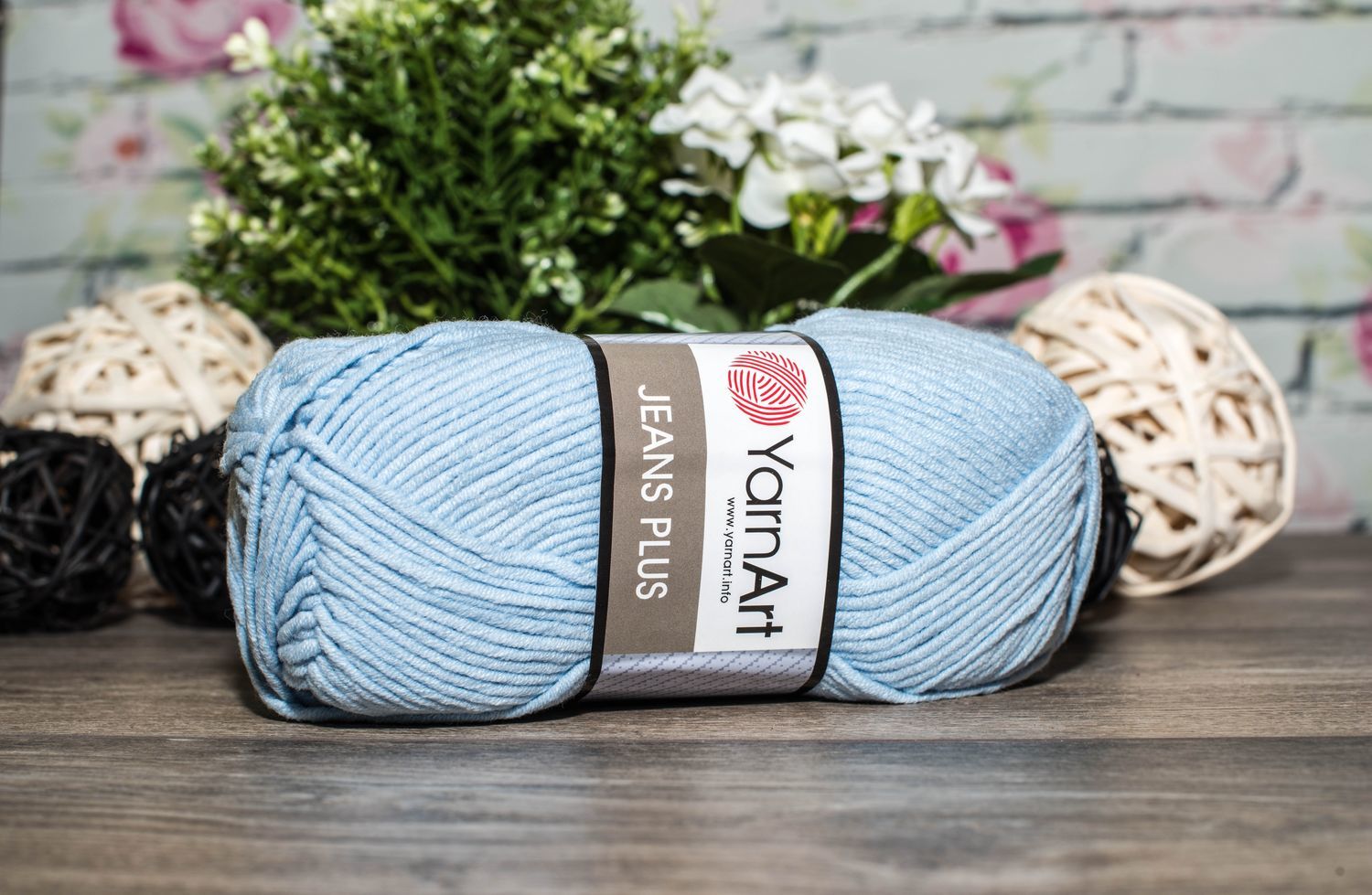
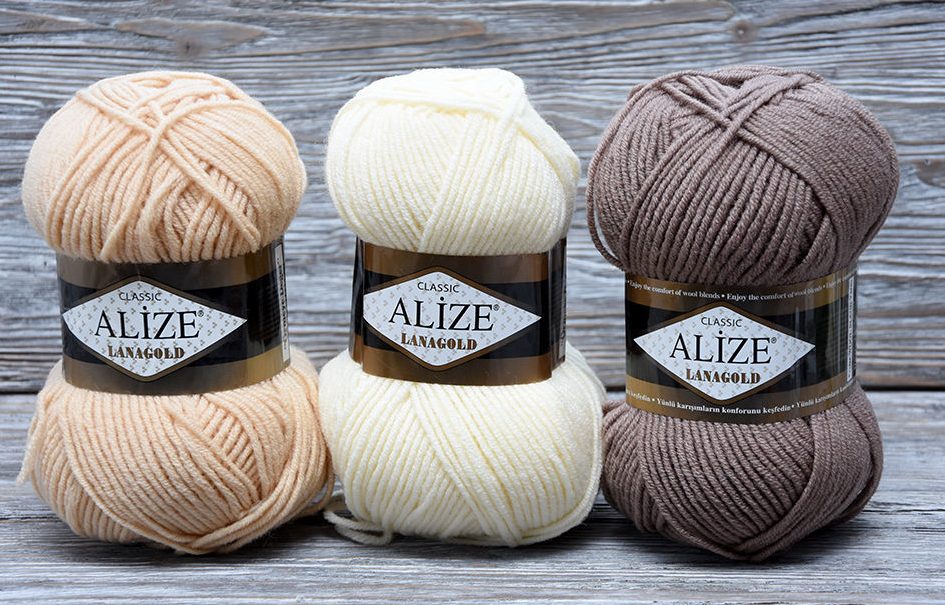
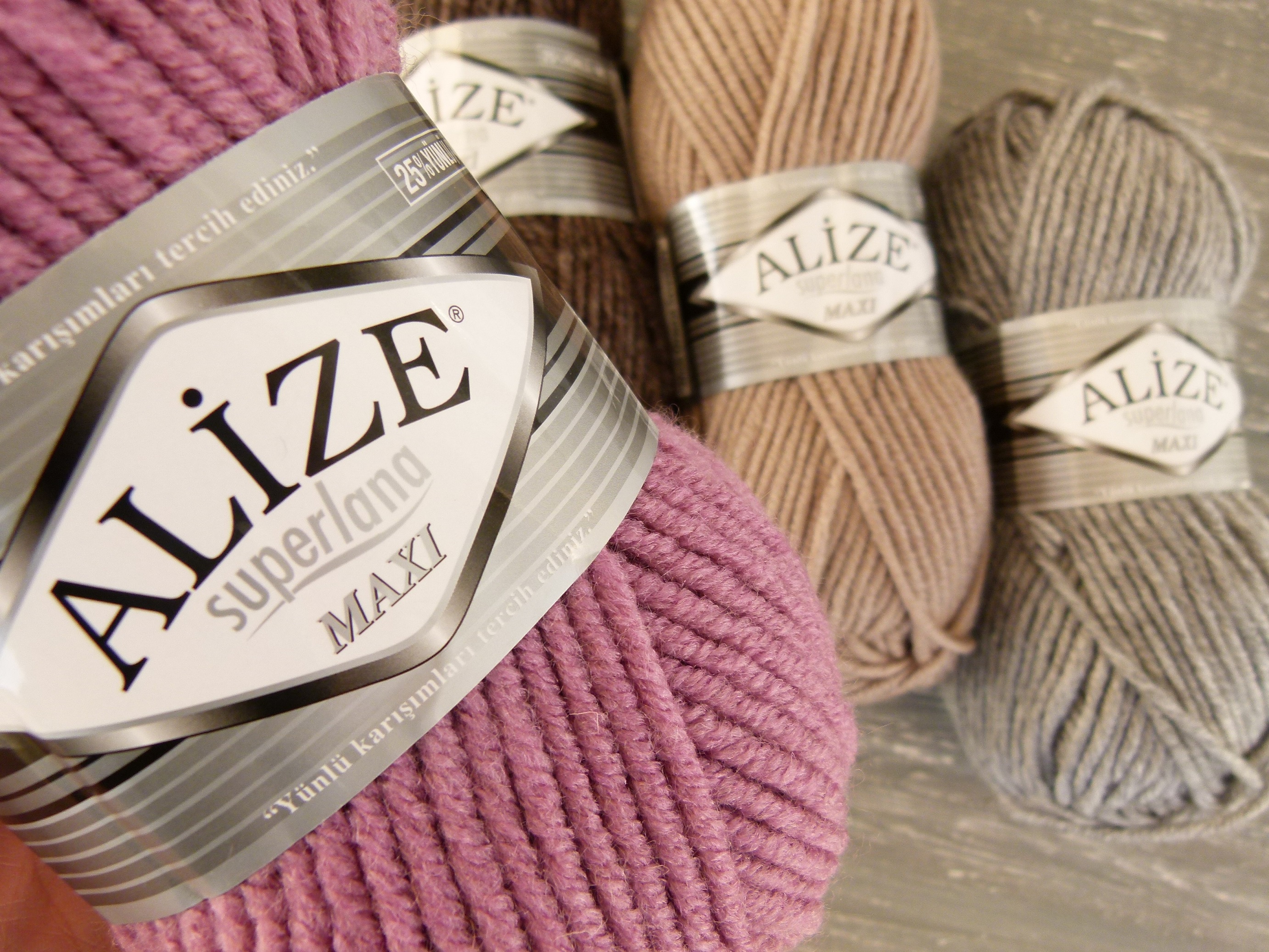
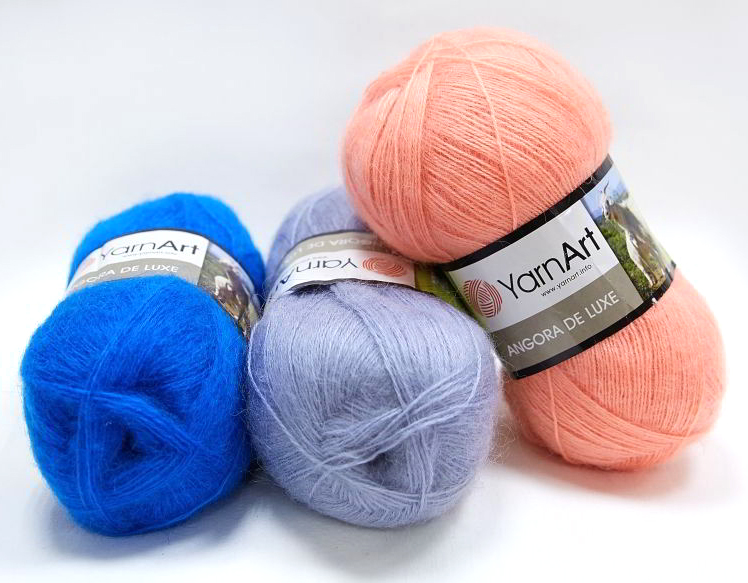



Fashionable knitting techniques
Sweaters with a "braid" pattern look good, they will look more interesting if you knit them from melange yarn. In this model, the collar, bottom and cuffs are knitted using the "rib" technique, and the fabrics are knitted using the "braid" technique. This pattern is made with two knitting needles, looks interesting, and is suitable for winter jumpers. They are usually made quite voluminous, so special measurements are not required.
A knitted cardigan with a pattern of small openwork diamonds is suitable for summer. On thematic pages you can find diagrams with a description of how to knit this pattern. This technique looks good with thin threads of viscose or polyester.
The model with a large flower in the front can be worn in early autumn. It is better to make such a sweater from wool with a small admixture of mohair, then it will keep warm and also fit nicely to the skin. The knitting technique for such a model is the front surface. The flower is knitted according to a simple pattern. The cuffs, collar and bottom are made from elastic, which is knitted with a thread of a different color.
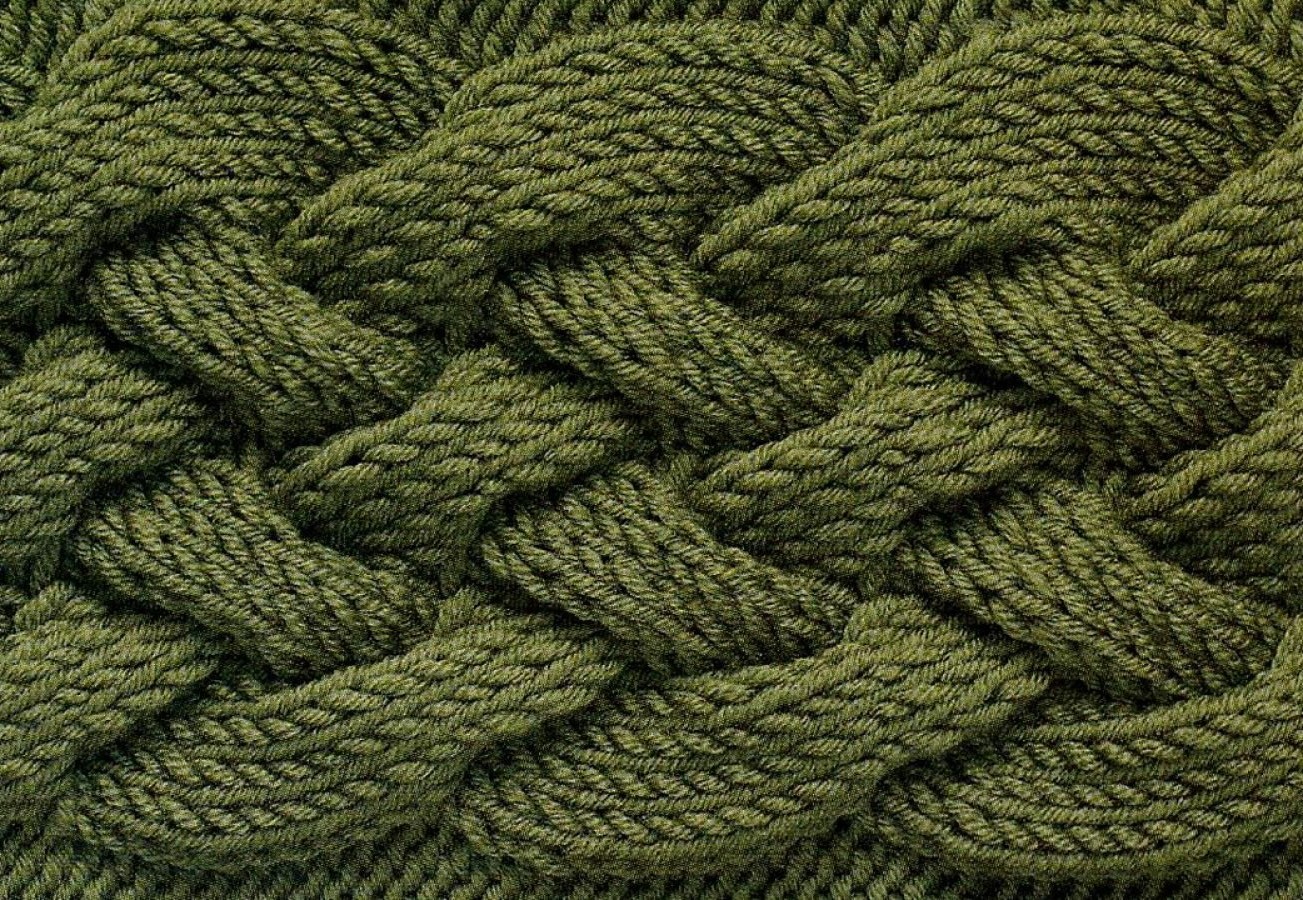
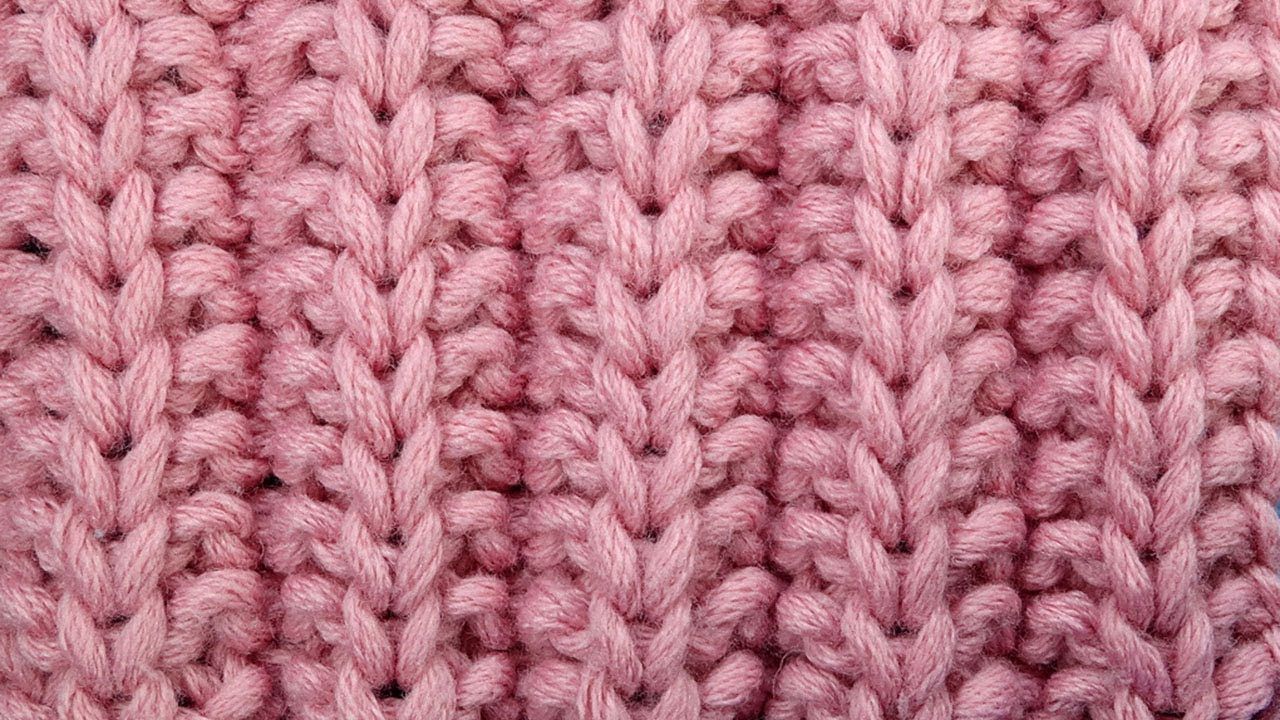
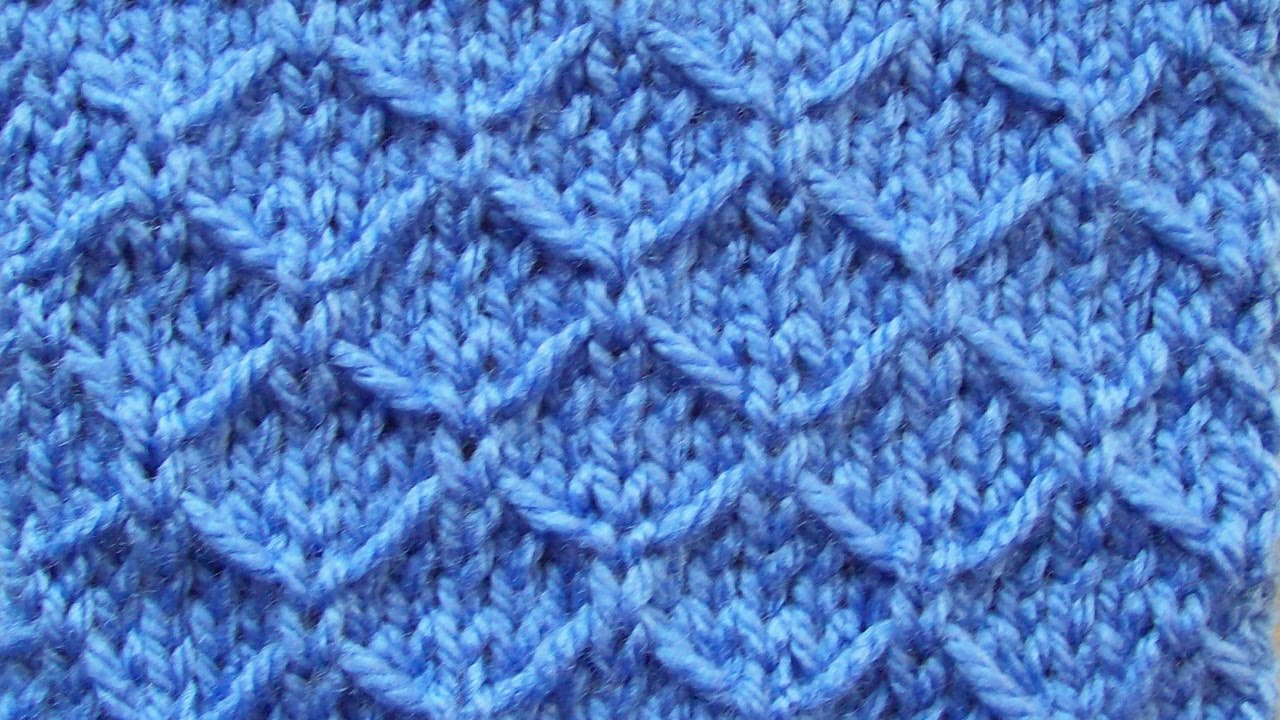
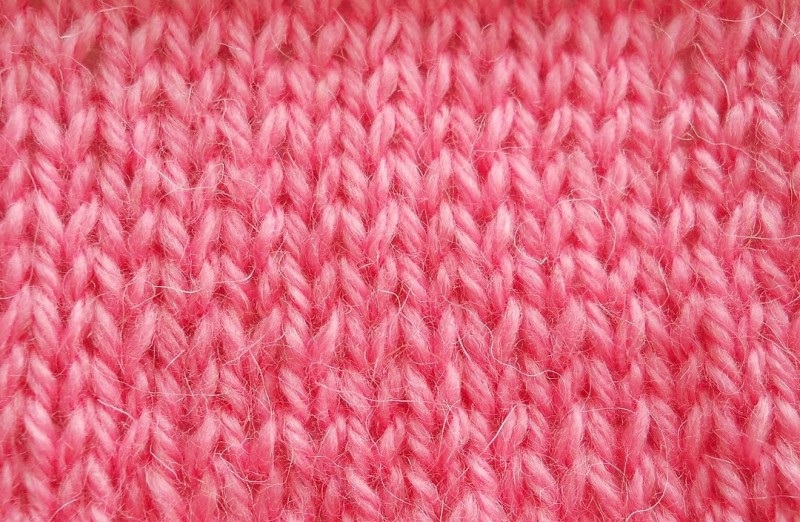
Creating a pattern
To knit a sweater with knitting needles, you need to take measurements:
- Neck circumference (NC).
- Chest circumference (CG).
- Hip circumference (HC).
- Length from neck to waist along the back (LB).
- Shoulder length (SL).
- Arm length (AL).
- Wrist circumference (WC).
- Product length (PL).
When making a particular model, certain nuances should be taken into account. For example, when knitting a sweater with a hood, you will additionally need to measure the head circumference. In the pattern of a sweater for women, you should add the size of the chest dart (equal to the size of the bra).
Based on all the measurements taken (taking into account allowances), you can transfer the numbers onto paper. In order to calculate the number of loops, you need to knit a small sample with the main pattern. For example, 30 loops are cast on, 25 rows are knitted, and a square of 15 by 15 cm is obtained. Thus, it turns out that in one centimeter there are 2 loops in width and one and a half rows in the length of the product. The calculation for the pattern is based on these figures.
Step-by-step algorithm for beginners
It is sometimes difficult for beginning craftswomen to understand how to knit and assemble a sweater using a pattern. It is better to practice on small samples first, and then move on to larger ones. Of the patterns and techniques, it is better to start with elastic or stockinette stitch - these are some of the simplest, but at the same time beautiful types of fabric.
Oversized Cable Knit Sweater
To knit a women's voluminous sweater with braids, you first need to take measurements and transfer them to the pattern. Knitting this model is suitable for beginners, because there are many easy elements.
The following algorithm will tell you how to knit a sweater with braids:
- First, you need to choose yarn. For such a pullover, Alize Burcum is suitable (210 m of yarn in 100 g), for which it is recommended to take simple straight knitting needles of size 4-6 mm.
- You need to cast on 83 stitches and 2 edge stitches (for size L).
- First, knit a 1 through 1 elastic band (purl and front loop). Depending on the knitter's wishes, it can be made 2 to 5 cm wide.
- An increase is made to create a pattern, 4 loops are knitted, an increase is made in every fourth. Then 24 front loops are knitted and 4 for dividing the braids. To the end of the row, there is a repeat in a circle. Thus, it is necessary to knit 6 cm.
- The crossing of braids begins with the 13th row after 10 loops. The thread must be left in front of the fabric and 6 loops must be removed to an additional knitting needle, which are placed behind the knitting. Next, knit 6 front loops from a circular knitting needle, and then those that are on the additional knitting needle. After - another 10, in the next crossing, the loops that were removed to another knitting needle are left in front of the fabric. This alternates until the end of the row.
- From row 15, all these actions are repeated until the required length is reached.
- To knit the neckline, you need to decrease every 10 stitches and knit 5-6 centimeters like this.
- The back part is knitted with a garter stitch with a rib at the bottom. To do this, you need to cast on 83 loops and knit the same number of rows as in the front part.
- It is better to knit the sleeves with an elastic band, so the sweater will look more harmonious.
- Everything is assembled at the stage when all 4 parts are ready. First, the back and front are connected by the loops of each row. They can be sewn with a special plastic needle, or you can crochet, the second option is more reliable. The sleeves are sewn in when there are about 15 centimeters left to the end. They also need to be sewn into each loop.
When knitting is finished, it is advisable to wash the product.
It is better to start knitting such a sweater from the back and front parts, so that you can see how to knit the sleeves. It is advisable to take yarn with wool content, so that the product is warm.
Openwork jumper
An openwork jumper is best knitted from acrylic or a merino wool blend; for brightness, you can add a lurex thread. Aura yarn is suitable for such parameters. It is 20% polyamide. There are 240 m of yarn per 100 g. Knitting needles from 2.5 to 6 mm are recommended. Knitting density: 10 x 10 cm - this is approximately 29 loops and 37 rows.
Instructions on how to knit a sweater with circular needles:
- The back part starts with 56 loops, first knit a rib with alternating loops - 1 front, 1 back. Then according to the pattern: knit 3 loops, skip 3. Knit like this until the end of this part.
- The front is knitted similarly to the back, only in mirror image.
- Working with the sleeves - in place of the cuff, you need to knit a simple elastic band, about 5-6 centimeters, then continue with a mesh pattern.
The assembly is done by sewing the parts along the loops. The sweater needs to be washed, only then will it be ready to wear. It is better to wear some kind of T-shirt or tank top under lacy items, so the image will look more aesthetically pleasing.
Simple elastic band model
Many needlewomen do not know how to knit a sweater with a rib. The model is easy to make, you just need to follow the presented master class. Acrylic yarn with lurex, weighing 100 g per 240 m, is suitable for such a pullover. You will also need knitting needles of size 3 mm. The model is knitted as follows:
- For the back, cast on 120 stitches and knit with English rib (alternating 1 front and 1 back). After about 40 cm for the raglan line, close 8 stitches on both sides and in each subsequent 4 front row, 1 stitch 7 times. When the fabric is 55 cm long, close all the stitches.
- The front is knitted in the same way as the back.
- For the sleeves, cast on 54 stitches and knit with a rib pattern (1 x 1). When the sleeves reach a length of 66 cm, finish all the stitches.
- To assemble, you first need to sew the back and front along the raglan bevels, then sew the side seams and sew in the sleeves.
This model is very convenient and does not require much experience to make. If desired, you can decorate the item by adding rhinestones, beads, appliques or a patch. A high neckline will look good on such a sweater.
Video

